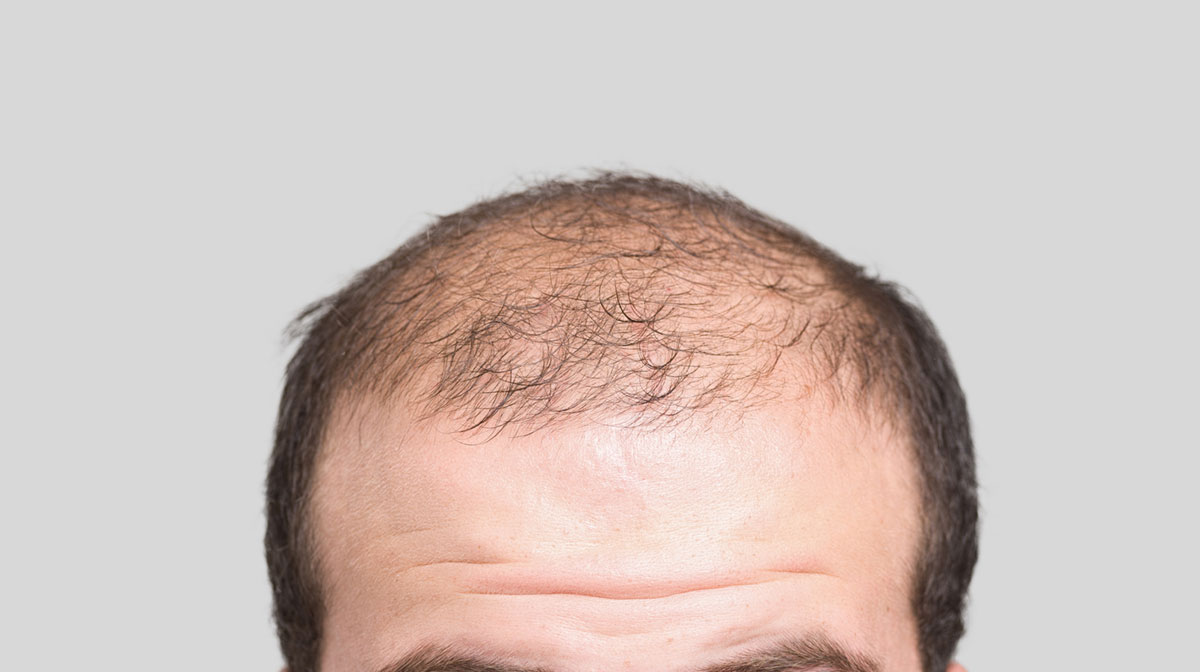Hair loss or baldness can cause a great deal of uncertainty, especially at a younger age. Common problems include a receding hairline, hair loss at the temples, thin hair and a bald crown. One in three men between the age of 20 and 50 suffer from baldness.
Male pattern baldness, also called androgenic alopecia, is the most common type of hair loss in men. Other common types are hair loss due to stress (telogen effluvium) and hair loss in patches (alopecia areata).

WHAT CAUSES MALE PATTERN BALDNESS?
One cause of male pattern baldness is genetics, or having a family history of baldness. Research has found that male pattern baldness is associated with male sex hormones called DHT. These androgens have many functions, including regulating hair growth.
Hair growth cycle
Each hair on your head has a growth cycle. With male pattern baldness, this growth cycle begins to weaken and the hair follicle shrinks, producing shorter and finer strands of hair. Eventually, the growth cycle for each hair ends and no new hair grows in its place.
Diagnosis
Inherited male pattern baldness usually has no side effects. However, sometimes baldness has more serious causes, such as certain cancers, medications or thyroid conditions. Ask your doctor for advice if hair loss occurs after taking new medications or when it’s accompanied by other health complaints.
Doctors can use the pattern of hair loss to diagnose the cause of male pattern baldness. They may perform a medical history and exam to rule out certain health conditions as the cause.
Health conditions can be recognized as the cause of baldness when a rash, redness, pain, peeling of the scalp, hair breakage, patchy hair loss, or an unusual pattern of hair loss accompanies the hair loss. A skin biopsy and blood tests also may be necessary to diagnose disorders responsible for the hair loss.
Genetics
Male pattern baldness can begin in your teenage years, but it more commonly occurs in adult men, with the likelihood increasing with age. Genetics plays a big role. Men who have close relatives with male pattern baldness are at a higher risk. This is particularly true when their relatives are on the maternal side of the family.
If your hair loss begins at the temples or the crown of the head, you may have male pattern baldness. Some men will get a single bald spot. Others experience their hairlines receding to form an “M” shape. In some men, the hairline will continue to recede until all or most of the hair is gone.

A PERMANENT SOLUTION
Experiencing hair loss, resulting in a receding hairline, a bald crown and thinning hair is very unpleasant for most people. Many men perceive baldness as a burden and feel less secure because of it.
In many cases of hair loss the sophisticated, patented HST-method for hair transplantation is an excellent solution to restore a natural head of hair. In a free personal consultation our hair specialists will assess your situation. Based on this professional diagnosis we will offer you a detailed treatment plan.
Read more information abour hair transplantation for men
Our Contacts
Contact us!
Agias Sofias 28, Thessaloniki
info@dermaesthetichair.gr
(+30) 2310 282.292 & 2310 250.300

